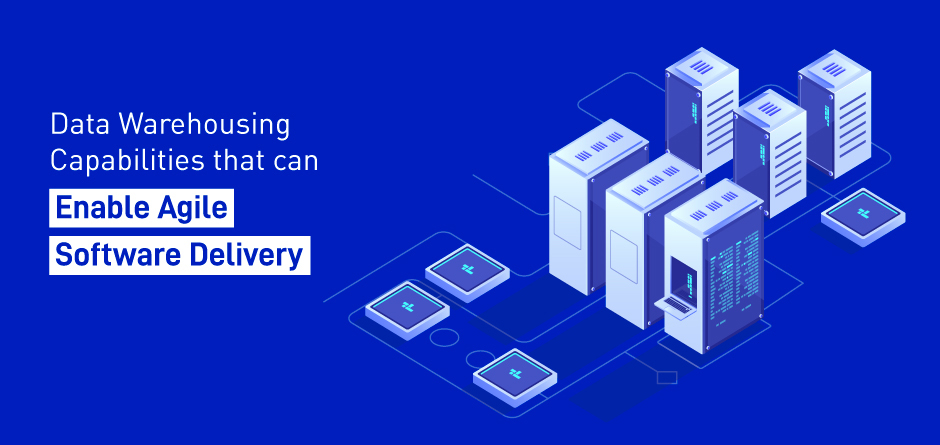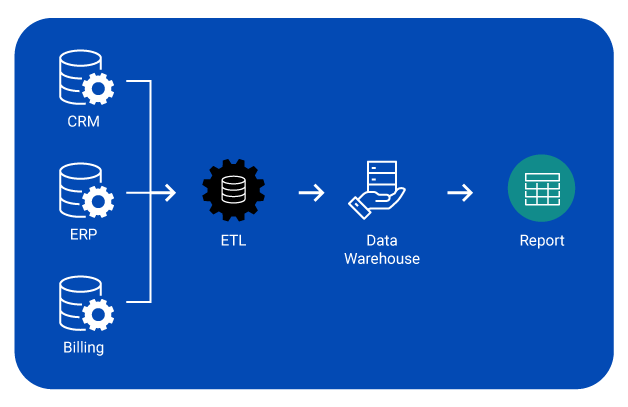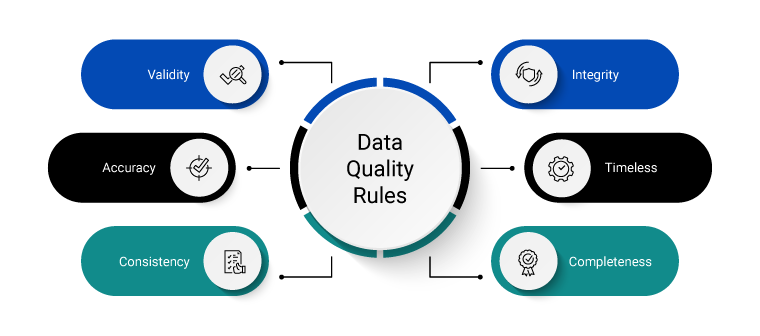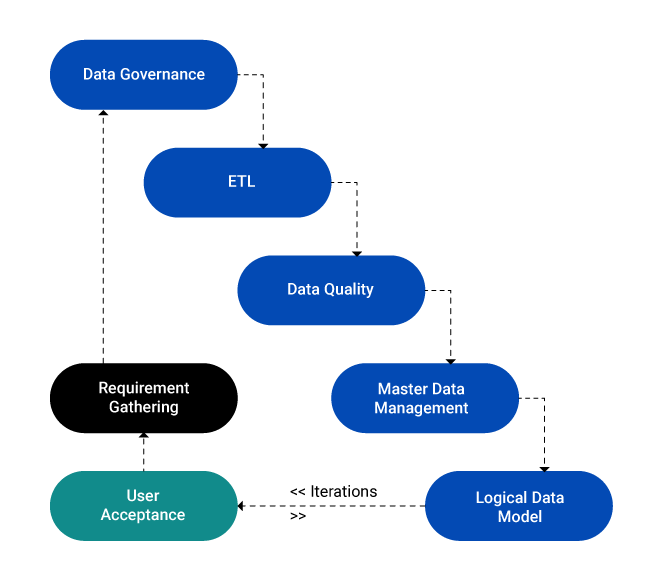
Data Warehousing Capabilities that can Enable Agile Software Delivery
What is Data Warehousing?
While talking about data warehousing, we need to know some basic concepts.
What is Data?
Any amount of raw facts, statistics, and information collected, measured, analyzed, and visualized can be called data. Data can be in any format. It could be in text, numerical, electrical signals, pictures, audio, or video format.
What is a Data Warehouse?
The data warehouse is a kind of database that is designed for query and analysis. The warehouse has historical data collected from different data sources.

The reference diagram represents a data warehouse that collects the data from many databases or data sources and then performs some ETL processes. ETL comprises three critical steps:
- Extract: To collect the data from different data sources.
- Transform: To clean and convert the data into a suitable format.
- Load: To migrate data to the Data warehouse.
For performing the ETL process, several ETL Tools are available, such as Talend, Informatica Powerhouse and cloud, Havo data, Stitch, etc.
Data Warehouse Capabilities
Data Governance:
Data governance means the action or manner of governing the data. It is a collection of processes, roles, policies, standards, and metrics that helps to maintain its effective use of information in enabling an organization to achieve its goals. It creates the processes and responsibilities that ensure the quality and security of the data used across a business. Data governance outlines who can take what action, on what data, in what situations, and using what methods.
ETL:
To make data actionable by automating key business rules. As previously mentioned, the extraction process, the data transformation, or we can say the data cleaning, and last but not least, loading the data into the desired warehouse for further use.
Data Quality:
The quality of data can be measured based on what the data is, the format of the data, and how accurate the data is—consistency, integrity, validity. The data warehouse helps us to validate the data and correct data issues to ensure trust and accuracy.

Master Data Management:
Master data is the collection of variables that give the background story about business data, such as location, customer, product, asset, and the basic data that is important for performing operations within a business organization.
Master Data Management is the basic process used to manage, centralize, organize, synchronize, and improve master data as per the business rules.
Logical Data Model:
After going through the ETL, quality check, and Master Data Management(MDM) process, it’s time to arrange the data into a logical model.
The logical data model includes:
- Entity: An entity represents a person, place, thing, event, or concept of interest to a retailer.
- Attribute: An attribute represents the names and defines a characteristic or property of an entity type.
- Relationship: A relationship represents names and defines an association between two entity types.
- Domain: It is a named type of data description that can apply to one or more than one attribute.
What is Agile Methodology?
Waterfall Model:

Traditionally, we used the Waterfall model during the development process. The waterfall model defines the basic order process of software development. It talks about what should be the order of steps. But, following the Waterfall model for the whole project development process is somewhat painful because it is a linear process. As the waterfall model suggests, every step should be executed for the entire project development. Client interaction will be after completing the whole project.
If any flows are disapproved by the client or the software is not completing the client’s requirements, the entire waterfall model will be followed once again until the client gets satisfied.
As a solution to this pain and time-consuming process, Agile methodology comes to help.
Agile Methodology:

The Agile methodology is a path to manage a project by dividing it up into several phases. It includes continuous communication with stakeholders and improvement constantly at every stage. When the work begins, teams repeatedly go through a process of planning, executing, and evaluating. Continuous collaboration is important, both with team and project stakeholders.
How Data Warehousing Capabilities can Enable Agile Software Delivery

As the reference diagram describes, every process during warehouse building is done in the iteration format. It is not possible without following an agile process.
For example,
An organization X assigned a project to design a warehouse for us. We will:
- Gather all the information and requirements.
- Design partial data governance.
- Design some part of an ETL process.
- Check the quality of data with the client’s requirements.
- Design some part of the Master Data Management(MDM) strategy.
- Create a basic logical view of the data.
- Present the work to the client. If he is satisfied with the work till now, then we move forward with further requirements and follow the same procedure.
- If he is not satisfied, then again, we gather requirements and follow the same procedure.
This is how the data warehousing capabilities enable agile methodology. One platform that is the ideal modern data warehousing cloud is Snowflake. It lets you democratize data analytics at all levels of your business so all users with different expertise can make informed, data-driven decisions. Develop and run modern apps to best serve your employees, customers or other stakeholders. Develop new revenue streams based on data to help drive your business forward.
RECENT POSTS
CATEGORIES
